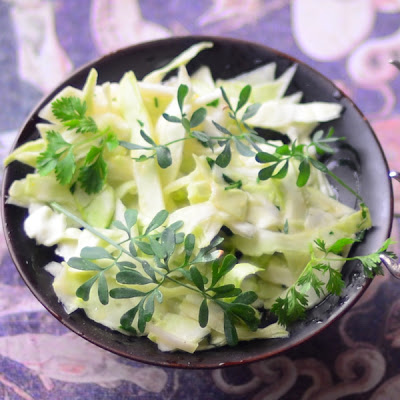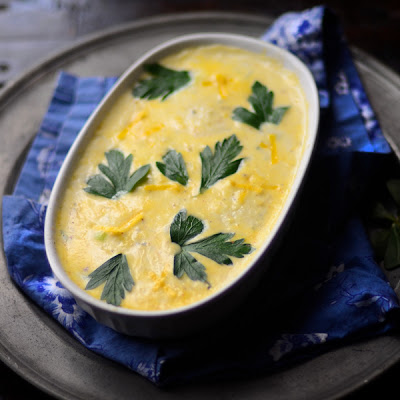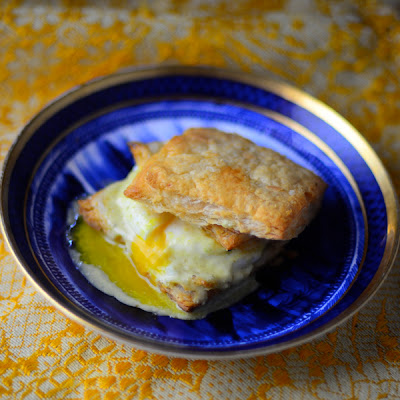530 BCE black
figure Panathenaic amphora, MMA
The 5 Star Makeover group is convening once more and the topic
is Greek Meze.
Since my game
is history and food, I went to ancient Greece by way of a favorite cookbook, The Classical Cookbook by Andrew Dalby and Sally Grainger to find my contribution to the makeover. With so much to choose from, deciding on what to pick is not easy.
Mediterranean cuisine began in Greece after all, but so did Western Civilization ––hard to believe but there is more
to Greek culture than just the food. For example, when I
think Greece I think pottery.
by Andrew Dalby and Sally Grainger to find my contribution to the makeover. With so much to choose from, deciding on what to pick is not easy.
Mediterranean cuisine began in Greece after all, but so did Western Civilization ––hard to believe but there is more
to Greek culture than just the food. For example, when I
think Greece I think pottery.
I
have had a serious crush on Greek pottery for as long as I can remember (that and the Klismos, but that's another story).
There
is something strangely compelling about their red and black pottery, often populated by comely men and women up to their Attic antics –– eating, drinking and frolicking. Mr Keats was certainly captivated by their frozen beauty in his Ode to a Grecian Urn. Greek pottery decorations of this period did seem to capture life of the times more often than not, sort of proto-life-style reporting and their revelries were embellished with magnificent Greek key and palmette patterns meandering elegantly around the clay surfaces (more heroic subjects seemed to end up in marble).
One
of my favorite jobs as a production designer was working on a PBS program that went from Archimedes' ancient Greece to Thomas Edison's 19th c New Jersey.
For the Greek section I got to make great furniture and pottery and it
was an incredible thrill. Since the “Eureka”
moment happened in a bathtub, we got a metal horse trough and a great
fabricator made it into a credible “terracotta” tub that looked like the real
deal (it was based on the tub above) complete with carousing porpoises that my
art director and I painted (as well as the oil lamps, a giant ewer for pouring
bath water –– all made by a wonderful potter in Tribeca) and a gorgeous 3
legged wooden table (all of which went to the lucky director, drat).
Originally, the pottery was made using a "black figure" technique that involved a black slip background from which the red color patterns were incised after a first firing (this is a
little like the scratchboard technique I remember from art class as a kid). Then the clay was fired again to lock the design.
Around 530BCE, this evolved into the "red figure" technique that allowed the potters to
paint the design on the pot instead of scratching the design into the black
surface. That gave the craftsmen the
ability to create more intricate designs.
Interestingly enough, much of what we know about Greek lifestyle come
from the designs on these magnificent pots –– the aforementioned proto-life-style reporting,–– fleshed out by great contemporary accounts that
have been saved through all these thousands of years. We can see the way they ate, what they sat
on, ate from and what they were wearing (or in the case of the servants, NOT
wearing).
Kottabos-playing Greeks were a frequent subject for pottery designs. Kottabos
was a game that involved accurately tossing the dregs of your wine cup (usually
a low kylix form as seen above) at a target (really hard to wrap your head around Socrates
playing this undignified game but it was a sure fire way to lighten up a party).
“ The most usual form of the game was this, –a
piece of wood like the upright of a balance having been fixed in the floor or
upon a stable basis, a small cross-beam was placed on the top of it [a wooded
base] with a shallow vessel like the basin of a pair of scales, at either end.
Under each of these vessels stood a broad-mouthed vase, filled with water, with
a gilt bronze statue called a Manes,
fixed upright in its centre.” When done properly, one thing would hit another making
a sound “by an onomatopoæ called latax”
(the act of tossing was called ankula after the
turn of the wrist involved in the toss).
The victor was the one who spilled the least wine and made the most
noise. It was also thought that the greater the success at the toss, the higher
the “place occupied by the player in his mistresses affection”.
 |
| Symposium Getty Museum |
Kottabos shenanigans aside, I can just imagine the simple Greek room, with diners leaning on silk-cushioned couches set about the spare elegant space, discoursing brilliantly whilst eating from gorgeous low tables laden with lovely, clean-flavored food that is as good today as it was 2500 years ago.
The Classical Cookbook said the recipe for the sweet and sour glazed shrimp I made was suggested by a few words in a remarkable
document called The Banquet of Philoxenus from around 400 BC, "Honey-glazed shrimps besides, my love" is all there was to work with. Grainger, with her encyclopedic knowledge of the cuisine of the period, put together the recipe using appropriate ingredients and techniques from those few words –– a well-educated guess.
Grainger described The Banquet of Philoxenus as “a poetic celebration of obsessive culinary pleasures, a literary dinner-party” (available online HERE and a lot of fun to read). It is full of lush descriptions of topics discussed and food eaten but also does things like calculating the size of the party by the number of couches in the room. What a world it was.
There is talk of a man who:
Grainger described The Banquet of Philoxenus as “a poetic celebration of obsessive culinary pleasures, a literary dinner-party” (available online HERE and a lot of fun to read). It is full of lush descriptions of topics discussed and food eaten but also does things like calculating the size of the party by the number of couches in the room. What a world it was.
There is talk of a man who:
“…out of his
prodigious luxury used to syringe the lettuces which grew in his garden with
mead in the evening, and then, when he picked them in the morning, he would say
that he was eating green cheesecakes, which were sent up to him by the Earth.”
One banquet was
described:
“There were
rivers
With tender
pulse and blackest soup o'erflowing,
Which ran clown
brawling through the narrow dishes,
Bearing the
crusts and spoons away in the flood.
Then there were
dainty closely kneaded cakes;
So that the
food, both luscious and abundant,
Descended to
the gullets of the dead.
There were
black-puddings and large boiling slices
Of well-mix' d
sausages, which hiss'd within
The smoking
streamlet in the stead of oysters.
There too were
cutlets of broil'd fish well season'd
With sauce of
every kind, and cook, and country.
There were huge
legs of pork, most tender meat,
Loading enormous
platters ; and boil'd pettitoes
Sending a
savoury steam ; and paunch of ox ;
And well-cured
chine of porker, red with salt,
A dainty dish,
on fried meat balls upraised.
There too were
cakes of groats well steep'd in milk,
In large flat
dishes, and rich plates of beestings.”
What will you
say then when you hear the rest?
For roasted
thrushes nicely brown'd and hot
Flew to the
mouths o' the guests, entreating them
To deign to
swallow them, besprinkled o'er
With myrtle
leaves and flowers of anemone,
And plates of
loveliest apples hung around
Above our
heads, hanging in air as it seem'd.
And maidens in
the most transparent robes,
Just come to
womanhood, and crowned with roses,
Did through a
strainer pour red mantling cups
Of fragrant
wine for all who wish'd to drink.
And whatsoe'er
each guest did eat or drink
Straight
reappear'd in twofold quantity."
Not bad,
right? Contrary to what you might
infer after reading the above, the Greeks ate lots of fruits and vegetables at these wine soaked,
flower scented bashes.
I thought for my offering I would include a vegetable recipe from a different source, “Cabbage in the Athenian Way” that came from Mnesitheus, a Greek medical writer from the 4th c BC who said that this mixture cured headaches (also in The Classical Cookbook). It is a delicious refreshing salad and the honey vinegar (known as Oxymeli) is divine –– the cabbage is a great companion to the shrimp. The dishes are beautifully conceived; sweet and sour with a great deal of interesting but subtle flavors from the herbs and that dusky asafetida. You will be shocked at how modern it tastes.
 |
| Black figure amphora, 520 BCE, Gathering olives |
I thought for my offering I would include a vegetable recipe from a different source, “Cabbage in the Athenian Way” that came from Mnesitheus, a Greek medical writer from the 4th c BC who said that this mixture cured headaches (also in The Classical Cookbook). It is a delicious refreshing salad and the honey vinegar (known as Oxymeli) is divine –– the cabbage is a great companion to the shrimp. The dishes are beautifully conceived; sweet and sour with a great deal of interesting but subtle flavors from the herbs and that dusky asafetida. You will be shocked at how modern it tastes.
I leave you
with this lovely thought. Within the text of The Banquet comes the quote from the Sirens of
Nicophon:
“Let it now snow white cakes of pulse;
Let loaves
arise like dew; let it rain soup;
Let gravy roll
down lumps of meat i' the roads,
And cheese-cakes
beg the wayfarer to eat them.”
So may it be
for you.
Honey Glazed Shrimp
8
oz shrimp
1
T olive oil
2
T fish sauce
1
T honey
2
t chopped fresh oregano
black
pepper
Cook
the shrimp in the oil with the fish sauce and honey. Remove the shrimp and reduce the sauce by 1/2.
Add the oregano and pepper and pour over the shrimp.
Cabbage the Athenian Way
1
small white cabbage
2
heaping teaspoons chopped coriander
2
t chopped rue*
2
pinches asafetida
salt
4
oz (1/2 c) honey
2
T red wine vinegar.
Heat
the honey and add the vinegar and reduce a little. Chop up the cabbage and toss with the herbs,
vinegar, salt and asafetida powder.
*Rue can be purchases at some well-stocked herb plant stores or you can buy it online HERE. Although it is available dried at some spice stores, I do recommend using fresh. If you can't get it best to skip it... nothing else quite like it..
vinegar, salt and asafetida powder.
*Rue can be purchases at some well-stocked herb plant stores or you can buy it online HERE. Although it is available dried at some spice stores, I do recommend using fresh. If you can't get it best to skip it... nothing else quite like it..











































